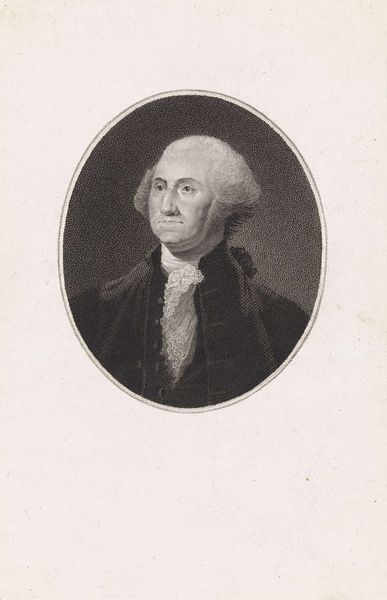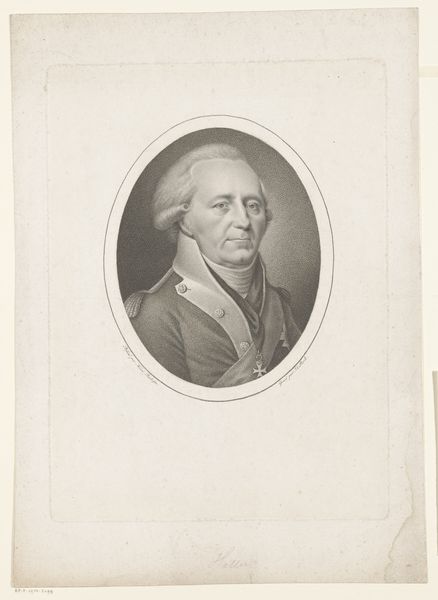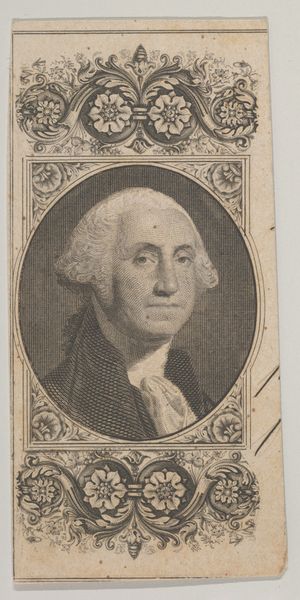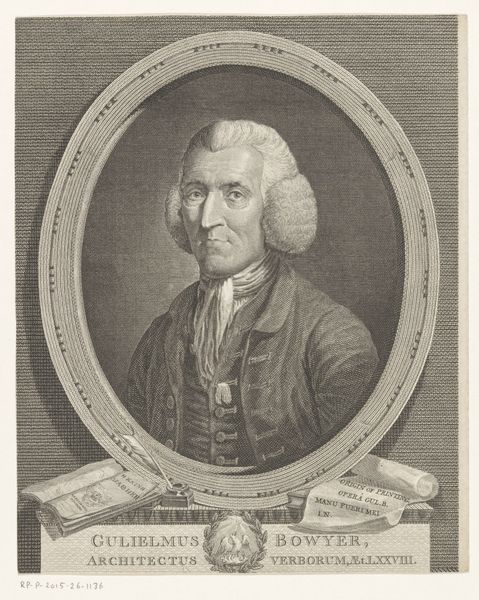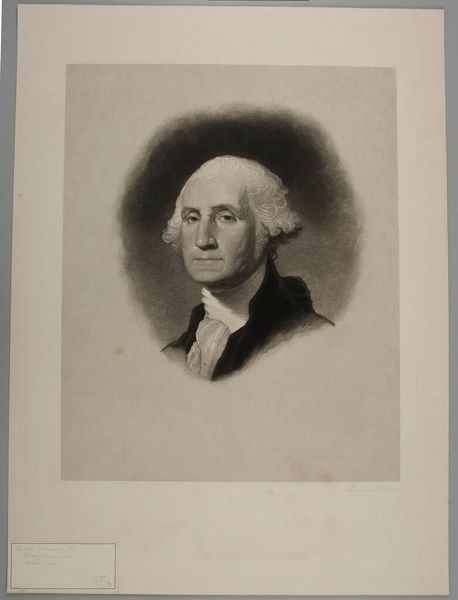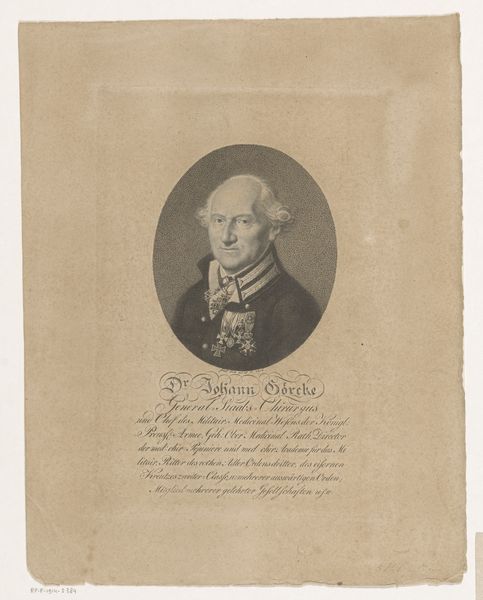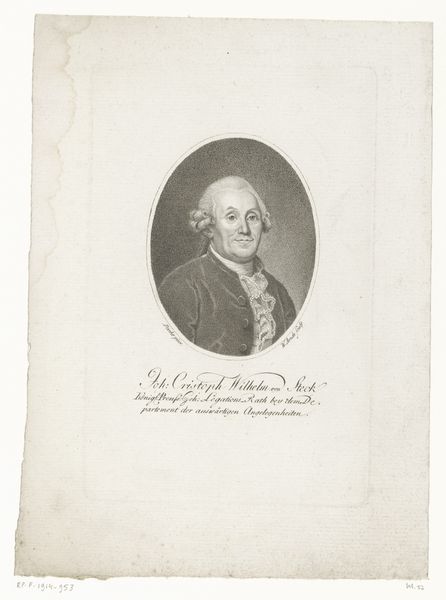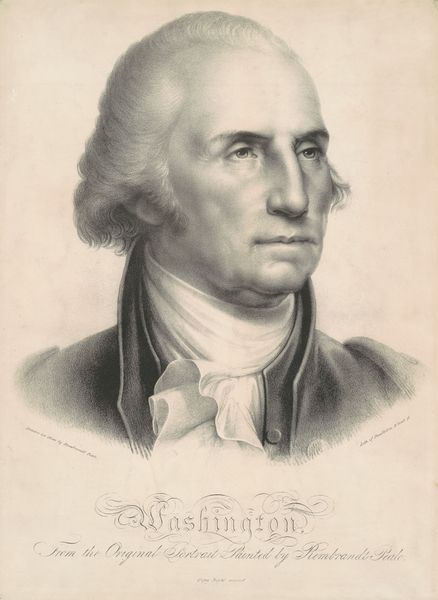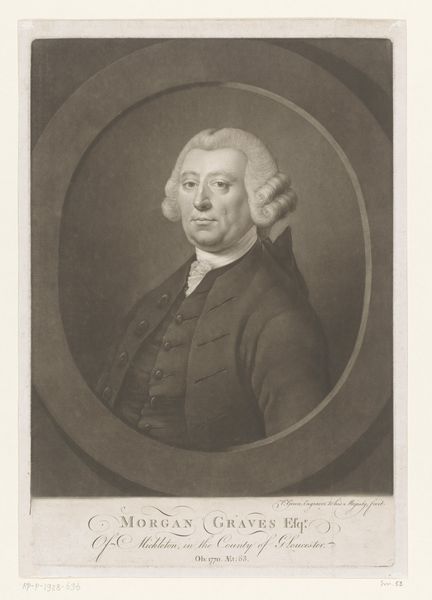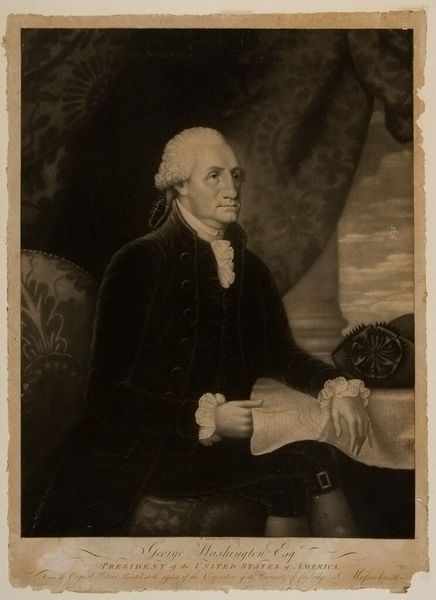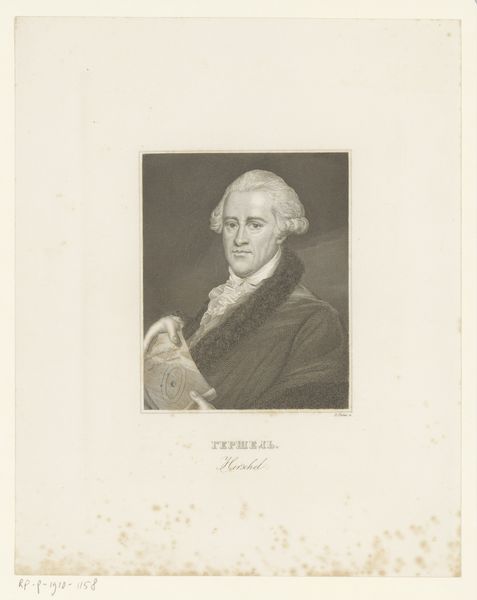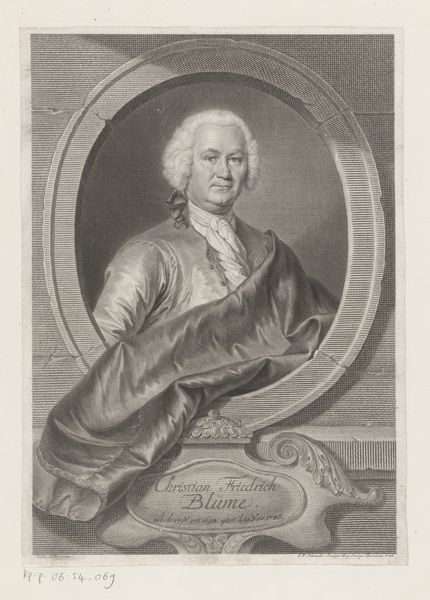
drawing, print, paper, engraving
#
portrait
#
drawing
#
neoclacissism
# print
#
charcoal drawing
#
paper
#
united-states
#
portrait drawing
#
history-painting
#
engraving
#
portrait art
Dimensions: 366 × 315 mm (image); trimmed within platemark; 448 × 346 mm (sheet)
Copyright: Public Domain
Curator: Good morning. We’re standing before "George Washington," an engraving created around 1800 by William Woolley. It's part of the Art Institute of Chicago's collection. What's your initial take? Editor: He seems… stern. Almost unnervingly so. The starkness of the black and white only amplifies that serious gaze. Curator: I find it more dignified than stern. Knowing this was made after his presidency, and after he voluntarily relinquished power, I see a man who’s borne tremendous responsibility. It reminds me that the mythology of Washington, especially regarding race, conveniently ignores a complex legacy rooted in wealth acquired from enslaved Africans and their descendants. Editor: Precisely! It's fascinating how these neoclassical images are tools. Tools used to create a mythology. To cement power. It almost feels propagandistic in its clean lines and deliberate presentation of Washington as almost a Roman figure. A "reluctant" leader, always putting the needs of the nation before his own... Curator: I agree, it’s strategic, yet the skill in Woolley's hand is evident. Look at the texture he creates, the layering of the charcoal and the almost imperceptible gradations that give life to a flat surface. Even that fluffy cravat adds a needed bit of humanity. I see hints of vulnerability despite the effort at a god-like portrayal. It whispers rather than shouts. Editor: But consider the context, too. An engraving meant for wide circulation. Accessible, replicable. What message does this disseminated image reinforce? Power? Authority? At whose expense? How does a Black person in 1800 view this image versus, say, a wealthy white landowner? And does that change today? Curator: Yes, layers of viewing, and interpretation, upon layers of history and pain. He isn’t just a man in a drawing; he's a symbol laden with contradictions. Perhaps looking closely at it – seeing the tiny triumphs of artistry, the almost invisible flaws— allows us to grasp those nuances. I think both his image and the facts need wider view. Editor: Definitely. The light and shadow here tell one story, but history demands that we supply the unlit spaces, too. The lives of those who weren't deemed worthy of portraits or public veneration. Curator: A fair point. Art then is both history *and* the unwritten truths that simmer beneath. Editor: It gives you so much to think about!
Comments
No comments
Be the first to comment and join the conversation on the ultimate creative platform.
